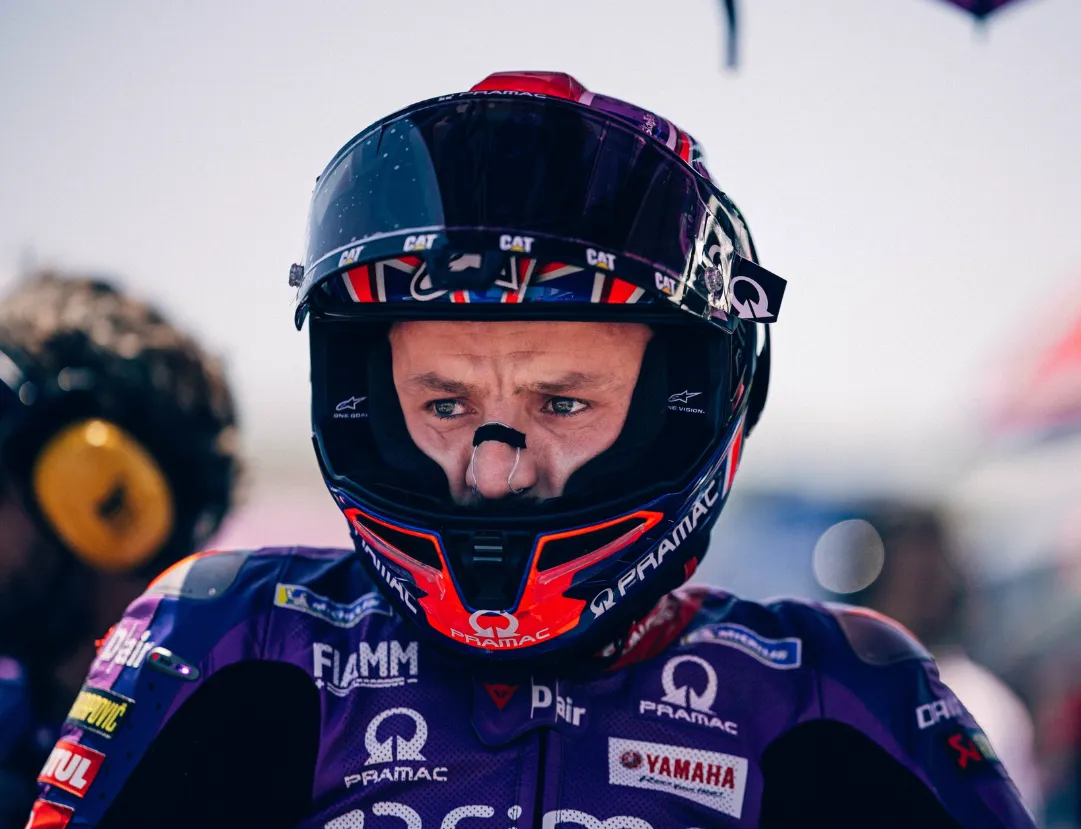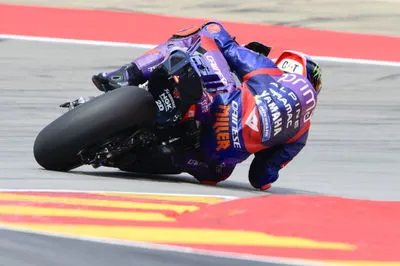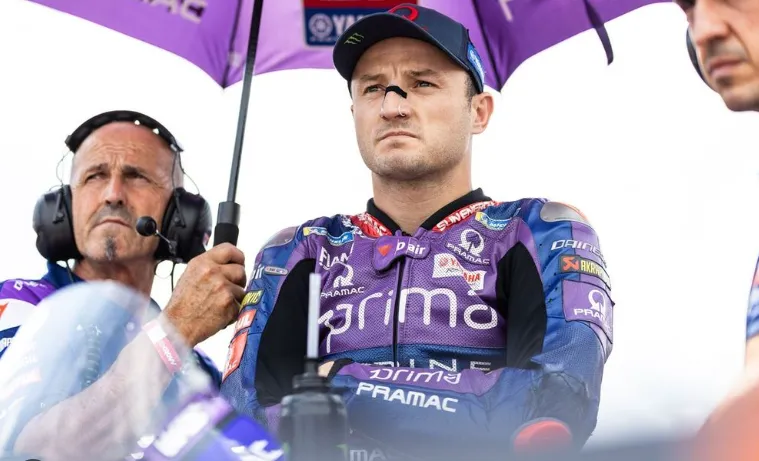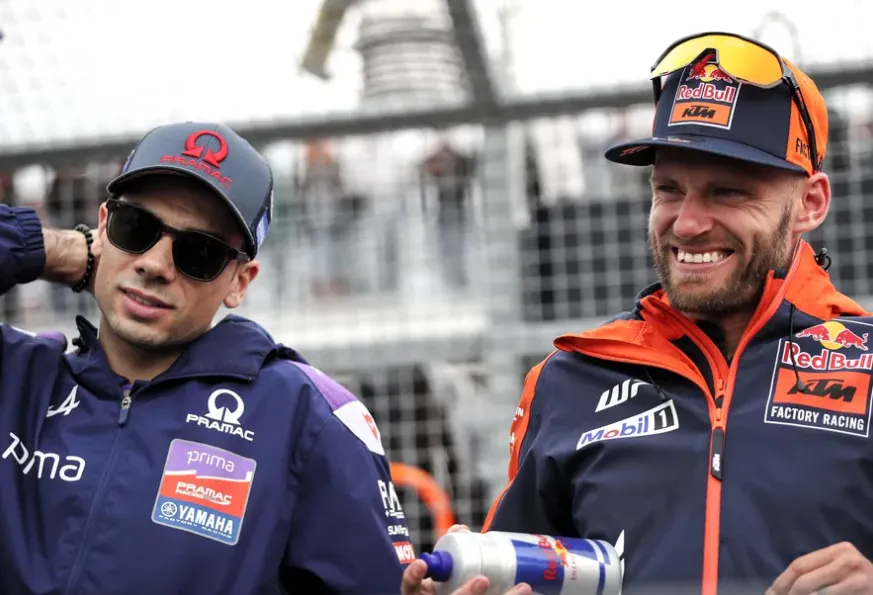

Jack Miller’s Shocking Analysis: Yamaha’s New Engine Tested in Aragon Made No Difference
Jack Miller’s MotoGP campaign may have lacked the explosive race results fans expected, but the Aragon test marked a crucial turning point for both the rider and Yamaha’s ongoing development. After a frustrating 14th-place finish at the Aragon Grand Prix — marred by a rear vibration issue — Miller finally got answers during the post-race test. Yet, as the dust settles at MotorLand, all eyes are already shifting toward Barcelona, where Yamaha faces another critical examination.
Jack Miller Clears Up Vibration Problem
Speaking candidly after the Aragon test, Jack Miller admitted that he was relieved to have finally gotten to the bottom of the vibration problem that plagued his Grand Prix weekend.
“After the disappointments with the vibrations early on in the race, it was nice to test and clear that up,” Miller explained.
“We went through test items and were able to diagnose the small problem that we were having, and understood the issue more deeply.”
While specifics were kept vague, it’s clear that Yamaha’s test program allowed Miller to pinpoint a technical gremlin that had been interfering with his race-day consistency. The result wasn’t a monumental transformation in lap time — but it did restore direction and confidence.

“No Big Difference” in New Engine
Despite the optimism surrounding Miller’s clarity on the vibration issue, Yamaha’s new engine test at Aragon offered less to cheer about. When asked about the performance of the engine, which had also been used by Augusto Fernandez over the weekend, Miller’s response was blunt:
“No big difference,” he said.
“A little step in the same direction from what we’ve been running since Jerez.”
The Iwata factory had hoped for more impact from the power unit upgrades, but Miller’s assessment suggests marginal gains at best. The engine isn’t holding Yamaha back, but it’s also not offering the performance boost needed to challenge the frontrunners consistently.
Yamaha Development: Swingarm, Aero, and Electronics
While the engine updates underwhelmed, Yamaha’s broader test package still gave Miller and his team plenty to work with.
“No chassis, but pretty much everything else,” Miller reported.
“Swingarm – we used a different one over the weekend then were back-checking to make a plan for going forwards.”
The test also included aerodynamic updates, something Yamaha’s other star rider, Fabio Quartararo, had already showcased. Interestingly, Miller opted against using the updated aero during the race, citing limited supply as the reason:
“We had those options over the weekend but I chose not to run it during the race – simply because we only had one to try. I tried to avoid damaging it at a race weekend.”
When he did finally try the updated aerodynamics, the feedback was surprisingly upbeat:
“I was pretty happy with it. It helped with turning. It made the bike more agile.”
The test also involved refining Yamaha’s electronic strategies, with input from the factory in Japan continuing to roll in. Miller emphasized that these incremental adjustments are beginning to align, and the team is “going the right way.”
Barcelona: The True Test for Yamaha
Despite minor gains in Aragon, the real challenge is set for this week in Barcelona, where Yamaha will conduct a private test. The focus shifts to a track that exposes the M1’s core weaknesses — especially in long, sweeping corners and on low-grip surfaces.
“It’s a track where we suffer on the long corners, so it’s a good place to test,” Miller said.
“These are the tracks where we suffer. In Argentina, when we don’t have the grip on the rear, we struggle more.”
Circuit de Barcelona-Catalunya shares several characteristics with MotorLand Aragon: both circuits present low grip and high tire degradation, which often punish underdeveloped rear traction packages.
Yamaha’s goal in Barcelona will be to replicate real race conditions and figure out whether their swingarm tweaks, electronic adjustments, and aerodynamic additions can translate into consistent lap times on a notoriously slippery surface.
Where Does This Leave Jack Miller?
It’s no secret that Jack Miller’s switch to Yamaha was met with mixed reactions, especially given the team’s recent performance struggles. The Australian has remained professional, offering sharp feedback and playing a key role in development, but the pressure is mounting. If the improvements don’t translate into points soon, Miller’s long-term role with the team could be in jeopardy.

Still, Miller seems to embrace the challenge:
“Testing a few items was good. We are going the right way.”
While that phrase might sound familiar to Yamaha fans — who’ve heard it during many rebuilding phases — the fact that Miller is diagnosing problems, providing actionable feedback, and staying focused is a positive indicator.
What’s Next for Yamaha and Miller?
The next step is clear: Barcelona will reveal whether Yamaha’s small steps are becoming meaningful strides. If the team can finally tame their grip issues, especially on tracks that demand consistent rear-end stability, Miller may become the unlikely architect of Yamaha’s resurgence.
If not, the Aragon progress could quickly be overshadowed by another weekend of head-scratching and backpedaling.
For now, Yamaha and Jack Miller continue to grind forward — cautiously optimistic, but well aware that time and patience are both running thin.


















